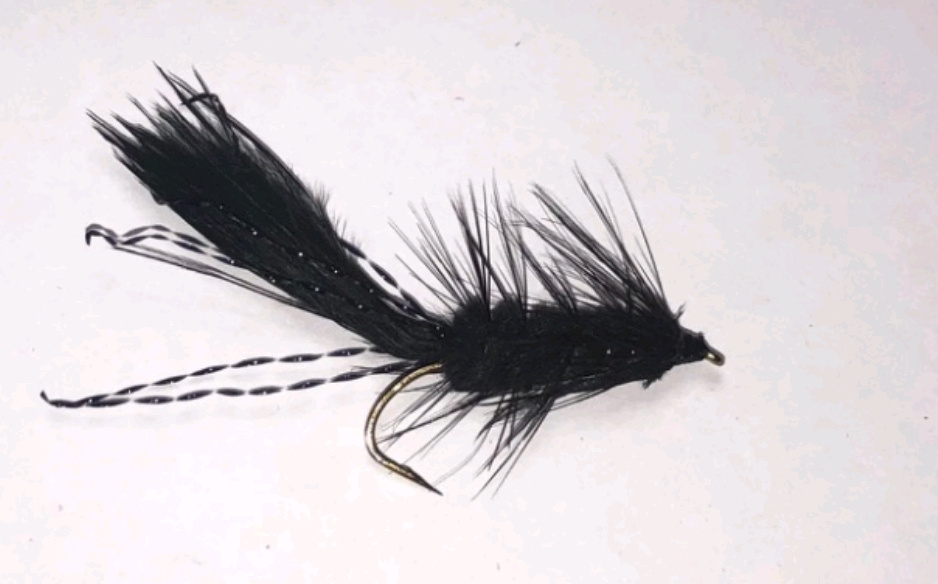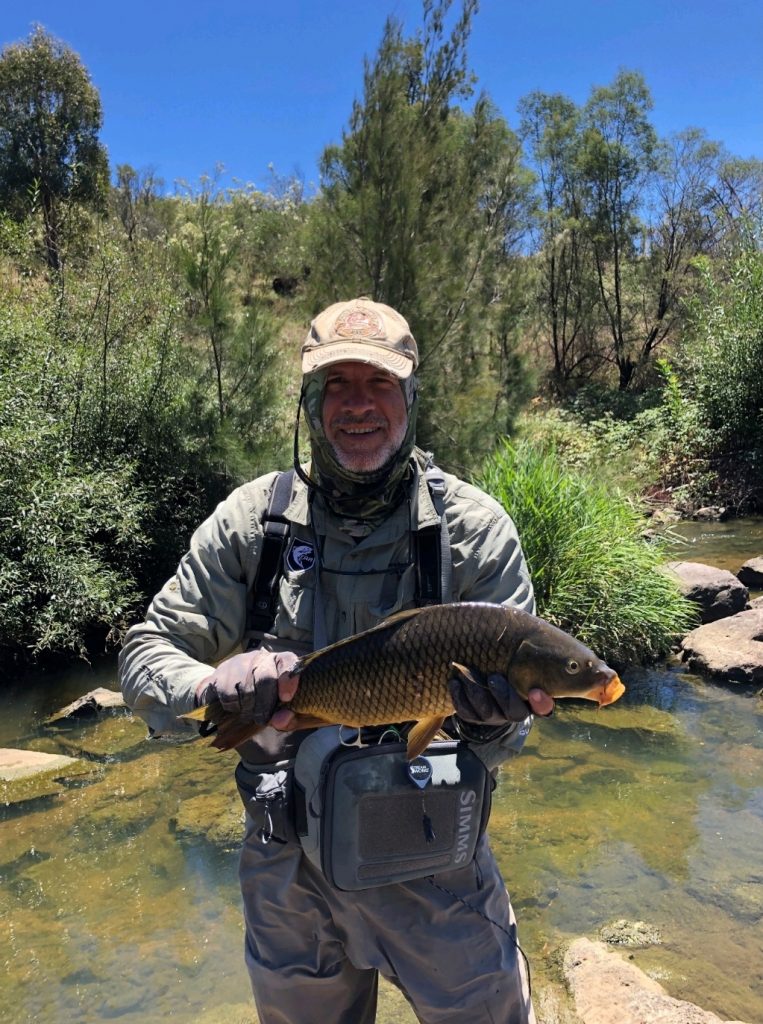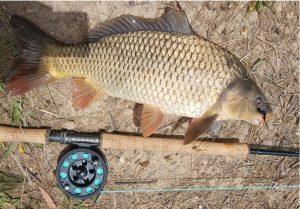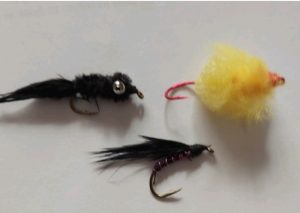Carp Fishing Hints:
General. Carp are typically bottom feeders but they can also feed on the surface. Carp are easily tackled from shore, boat, kayak. I wouldn’t recommend using a leader less than 6lb…they don’t have great eye sight and are not leader shy. Use strong hooks – bait or fly…..there are some big suckers out there….below is the result of my last hook-up (and lost) carp!

Bait. Corn, bread and/or worms are all great baits. A small circle hook on a 50 cm leader, swivel and the lightest sinker you can cast is my preferred rig. There are plenty of options and suggestions on the web. I have had to chase a couple of rods into the water, so if you leave your rod out of your hand, don’t forget to set a light drag and clip on a bell.
Fly Fishing. You can have a crack at either surface or subsurface tactics. My goal this year is to try to catch a carp on a dry! Nymphs, woolly buggers, bread flies are all options. Drop in and see the guys at the Boss Outdoors for some hints. I also have some fabulous hints from Jason Stratford who has caught over 1000 carp on fly – I’ll provide the hints to those that register for the trip. Another source of information is on his Facebook site ‘Kangaroo Carp’ or YouTube. Leon, one of our club members, has been out successfully practicing (not something that happens to me often). Check out some of the photos at the bottom.
Some detailed hints follow. I’m not sure if these are Claude’s words. #2 rod sounds a bit interesting
Leader set up…
If you keep a basic trout rig in mind when targeting carp, you won’t go wrong. I used to hand tie up tapered leaders but found that debris would get caught on the knots. So now I use factory tapered leaders around 7.5′ – 9′ and just add 2-3′ of tippet. Tippet is entirely dependent on the size of fish and the amount of structure…but for me…I can get away with 8-10lb if I want to muscle fish / using wet flies…6-7lb for dries. You can use tippet rings for wet fly leaders without much issue.
In some places where the fish are highly pressured, very clear water (rare) then I might drop to 5lb for dries but if you hook a 75cm+ carp…you won’t win often as you will have trouble moving the 15 odd pound fish if they belly out on the bottom while you try and reel them in.
Sight fishing vs blind casting…
My style of fishing for carp is ALL sight fishing. By that I mean…I will rarely cast at a tailing fish if I cannot clearly see its head. Roiling fish (fish with head buried in a mud cloud) don’t get much attention from me as I can normally walk a short distance and find a cruising fish or one feeding in the shallows…or on the surface (even better). Note: sometimes you will see plenty of fish together gulping on the surface. This is a spawning aggregation and generally the fish doing that won’t eat. You need to scan the edges of the group and you will see the odd fish feeding / cruising around. Those are the fish to target. Also note that carp generally do not rise to a dry if they are actively feeding on the bottom (unless in very shallow water). They are ‘built’ to be bottom feeders primarily so are also very clumsy surface feeders and can move the fly with their lips (pushing it across the surface) or miss the fly all together. Patience is key…like trout…it’s important to wait until the head drops before setting the hook.
Strip set vs trout strike…
Both work and while I do strip set a lot…the trout strike probably works easier for newcomers as the rod is bent but will still have some shock absorption available when the fish blisters away on its first run…whereas with a strip set…I see a lot of people try and hold the fish (momentarily) which leads to a bust off. Pound for Pound…a carp will pull the head off a trout!!! The easiest way is to just use a steady rod lift as the carp have soft (but very elastic) skin around their mouths so are easy to set the hook on and once set properly, it’s rare for them to spit a hook.
Flies…
Flies are generally unweighted and very slow sinking on size 8-10 wide gape strong hooks. Barbless makes it easier to recover flies from the fish and get the fly back in the water to start fishing quickly. In some places (deeper / current or flow) you do need weighted flies to get the fly down to the fish. Again, my fly selection is different to the ‘norm’. I tie some patterns that work as a dry and can be sunk through the surface file by giving them a twitch / small strip – where they slowly sink. A slow sinking fly that intercepts a mid-water cruising fish at their eye level will very often get a reactive take. There are so many patterns that will work for carp but the woolly worm is a good all round wet fly as are damsel nymphs, plain old woolly buggers, squirmy worm style flies and pretty much anything that looks ‘buggy’. Here is a link to a simple each way bet fly.
https://vimeo.com/194213054
*****************************
On the rod front…use what you are comfortable with.
The rod is merely the delivery method for the size of fly and type of fly line used. I fish a 2wt or 3wt most often as you are limited by the tippet breaking strain and I use fairly small flies compared to a lot of guys and only need to cast short distances (most often 8-10m). Small rods are a lot of fun…I have taken carp around 85cm on the 2wt!
Bigger flies – greater break strain tippet…use the heavier rods. (By that I mean 5 or 6) If you are however in heavy structure…then a beefier rod (7 or above) and heavier tippet may be needed to muscle the fish a bit. If you use carp as ‘training fish’ you will quickly learn how much pressure you can pull through the rod without breaking tippets (which is a lot more than people think if you use good rod angles and ‘roll’ the fish a few times early in the fight).
Most of all…enjoy what you do and how you go about it. Don’t follow what everyone says (use it as a start point and then adjust to suit your local water!)
Beware though…this carp on fly thing can be addictive!!!



